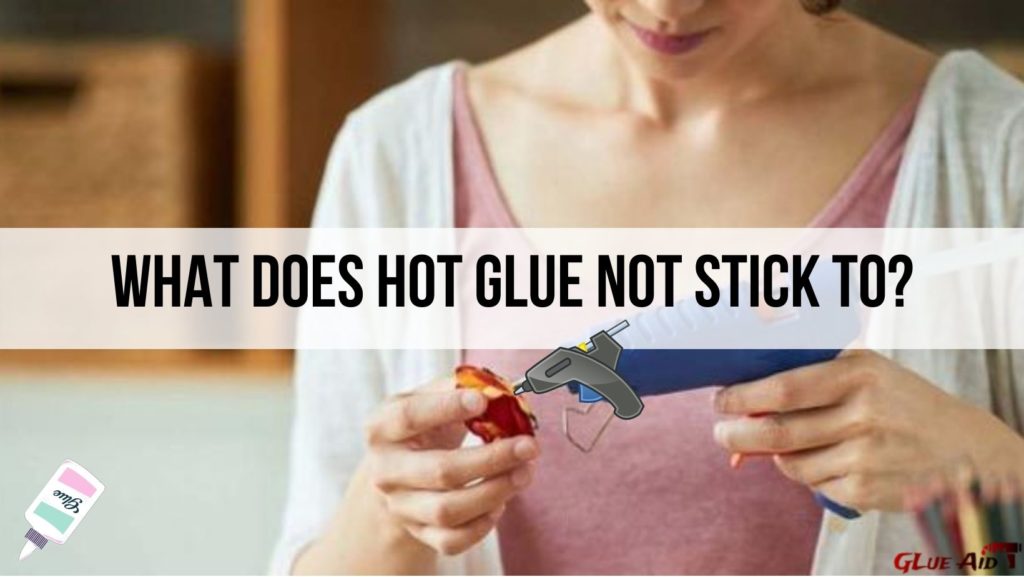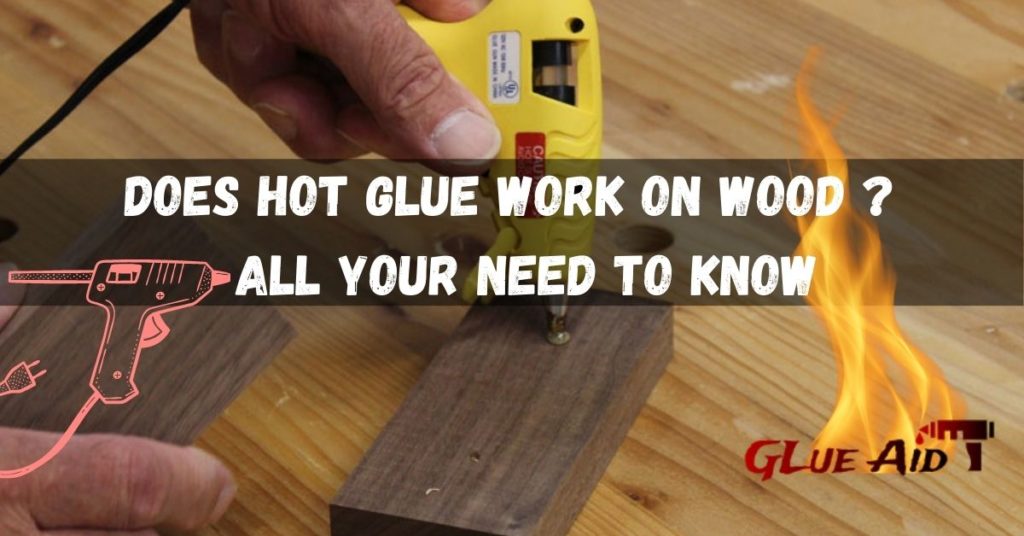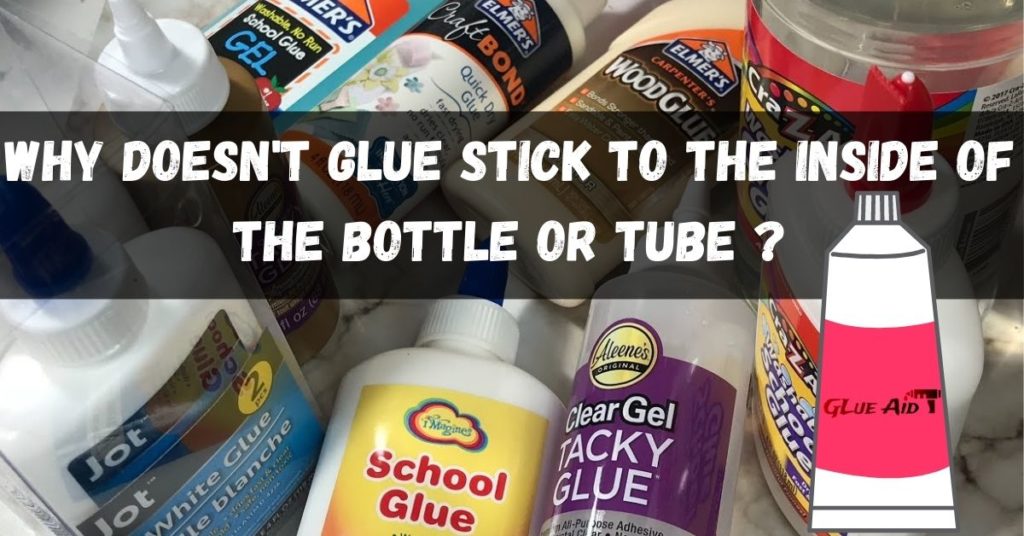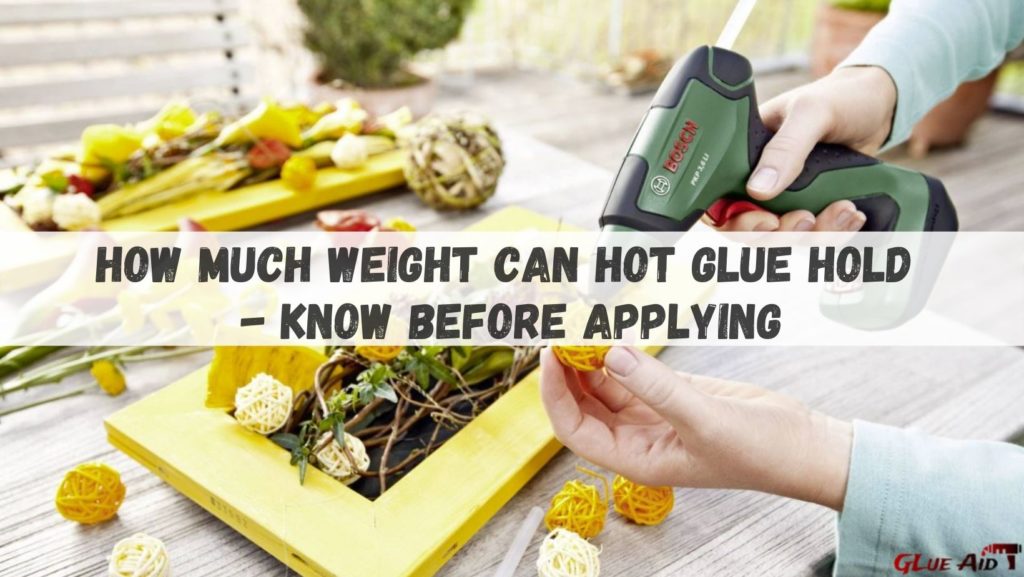If you regularly work with glue, you must have heard of the wonders of hot glue. The hot melt adhesive is one of the most popular ingredients for crafters. You can use it for different things and ways.
That also means you can use it to adhere to different surfaces together. But does that mean hot glue sticks to every surface? You bet it doesn’t. So, what does hot glue not stick to?
That’s the answer we are going to answer here. Keep reading.
Table of Contents
What Surfaces Will Hot Glue Not Stick On?
Hot glue is a thermoplastic adhesive that is applied hot, and it bonds to a variety of materials. It does not stick to wet surfaces or surfaces that are oily or greasy. Hot glue does not stick to things like metal, glass, and most plastics. This is because the adhesive on the glue is activated by heat, and these surfaces do not heat up enough to activate the adhesive.
Hot glue won’t stick to the below surfaces:
- Greasy or oily surfaces
- Silicone and vinyl
- Metallic surfaces
- Wet surfaces
- Ice
- Teflon
Hot glue will find it hard to stick onto relatively smooth surfaces like metal and silicone. It will also not stick on wet surfaces, vinyl, greasy surfaces, or wax. You will also have a harder time gluing oily surfaces with hot glue.
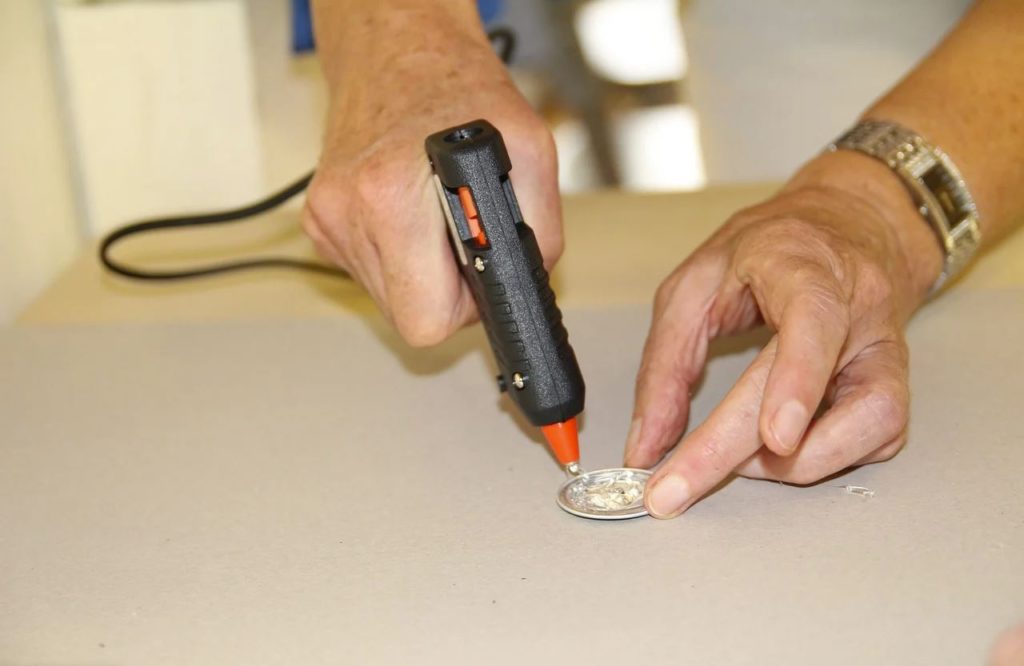
You must wonder why that’s so. Most people expect glue, especially hot, to stick onto almost any surface. It sticks to your skin after all, right?
A hot melt adhesive requires surfaces to be rough for it to work. The glue gets into the pores and crevices on such surfaces and molds them together. That allows it to bond to such surfaces together.
A classic example is a cardboard. Cardboard isn’t the smoothest of surfaces. That means it has grooves that form the perfect surface for hot glue. The glue will get into these grooves, then solidify and form bonds.
So, it means hot glue needs a conducive surface to work. Those are porous, and rough surfaces. Such surfaces are a safer bet. Greasy, waxed, or oily surfaces don’t offer that conducive surface. Therefore, the hot glue will not work on such surfaces at all.
Strangely, hot glue contains components of surfaces it won’t stick on. Wax and vinyl are all components of adhesive hot melt. Yet the hot glue can’t cling onto them. Strange, isn’t it?
What Then Does Hot Glue Stick On?
You might have read the list up there with a bit of disbelief. It seems like hot glue doesn’t stick to that many surfaces. If that’s true, then of what use is it to you? Many uses. There are other surfaces that hot glue will effortlessly stick on.
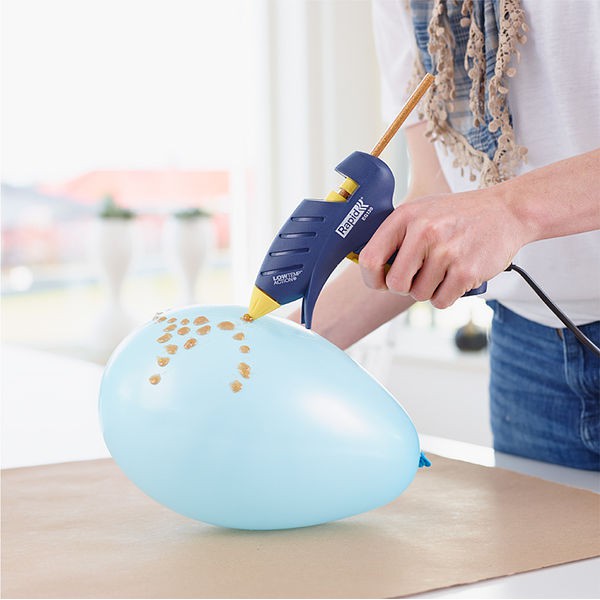
We have just the perfect examples for that. Hot glue wouldn’t struggle to form bonds on the below surfaces.
- Fabric (Especially nylon)
- Wood (sometimes)
- Glass and other uneven or porous surfaces
- Cardboard
- Paper
Although hot glue doesn’t stick onto some surfaces, it still is an essential tool for crafters. What it does stick on, it sticks with outstanding efficiency and forms rigid, long-lasting bonds.
What Will Make Hot Glue Stick Better on All Surfaces?
Although hot glue isn’t the perfect match for all surfaces, you can force it to be. Of course, that won’t have the best of results. But if you have no other option, then it’s worth trying out.
Using Hot Glue Guns

Hot glue guns are the perfect equipment to use on complex surfaces. That’s because they shoot out the glue at supersonic speeds that boost adhesiveness.
Remember to choose a hot glue gun that can heat the glue to the highest possible temperature.
Use The Highest Temperature Possible
The higher the temperature, the better the glue will hold on to the surface. That’s why we call it hot melt adhesive. It needs to be scorching hot to function well. The high temperature might give you a better result when you use it on notoriously tricky surfaces.
What Factors affects The Strength of Hot Glue
Although hot glue can be pretty efficient, some factors might speed up or slow the gluing process.
Improper Temperature
Hot melt adhesive gets its strength from high temperatures. That’s what enables it to find its way through the pores of surfaces for bonding. That means the lower the temperature, the less effective it will become.
The principle behind hot melt glue is to settle in the pores and solidify as it cools to form the bond. That’s why you need it to be at as high a temperature as possible.
The Surface
What surface are you using the hot glue on? We have been discussing that some surfaces won’t bond well with hot glue. And that’s why there are different glues for each type of surface.
Glue for use on wood differs from that for glass and other surfaces. The strength of the adhesive will thus not matter if you use it on surfaces that are not a good match.
FAQs About What Does Hot Glue Not Stick To
What is the best way to use hot glue?
It is important to ensure that the surfaces are clean and free of any dust or oils, as these can interfere with the adhesive properties of the glue. The surfaces should then be aligned and held in place before the hot glue is applied.
How do you remove the adhesive from your skin?
The adhesive can be removed by using complex academic jargon. First, the adhesive should be wet down with warm water. Then, a soft cloth should be used to scrub the adhesive until it is removed. If any residue remains, a household cleaner can be used to remove it.
Does hot glue stick to plastic?
Hot glue does not stick to plastic as the surfaces are non-polar. The attraction between the molecules is weak and therefore, the two substances will not stick together. The hot glue will bead up and roll off of the surface of the plastic.
What does hot glue work best with?
There are a variety of materials that can be adhered to using hot glue. In general, it works best with porous materials, such as paper or cloth, because the glue is absorbed into the material, forming a stronger bond. Non-porous materials, such as plastic or metal, can also be glued using hot glue, but the bond is not as strong.
Does hot glue stick to parchment?
The adhesive quality of hot glue is due to the presence of a resin, which is a type of polymer. Parchment is made from animal skin, which does not have any natural resins. Therefore, the two materials would not stick together.
Which glue is used in glue gun?
The adhesive used in a glue gun is typically a hot melt glue stick. This type of adhesive is applied in a liquid form, then quickly solidifies when it comes into contact with air. It is a popular choice for bonding a wide variety of materials, including paper, fabric, wood, and plastic.
What can you use instead of hot glue?
There are a variety of adhesives that can be used in place of hot glue. These include epoxy, superglue, and duct tape. Each has its own strengths and weaknesses, so it is important to choose the adhesive that will best suit the needs of the project. For example, epoxy is strong and durable but takes time to set, while superglue is quick and easy to use but may not be as strong as other options.
How long does it take for a hot glue gun to cool down?
The time it takes for a hot glue gun to cool down depends on the ambient temperature and the wattage of the glue gun. Typically, a high-powered glue gun will take less time to cool down than a lower-powered one.
What is the difference between hot glue and other types of glue?
Hot glue is the glue that is heated and then applied to an object. It dries quickly and is very strong. Other types of glue are not heated and do not dry as quickly.
What temperature should hot glue be used at?
The glue should be heated to a temperature that will allow it to be easily applied and will create a strong bond. The optimal temperature for hot glue is approximately 170 degrees Fahrenheit.
The Bottom Line
Hot glue has many uses. But for all its versatility, there are surfaces it wouldn’t be a good fit for. What does hot glue not stick to? Silicone, wax, proteinous, wet, oily, or greasy surfaces. Ever wondered why they tell you to degrease before using hot glue?
If you didn’t know, we bet you now do.
Relevant Resources:
